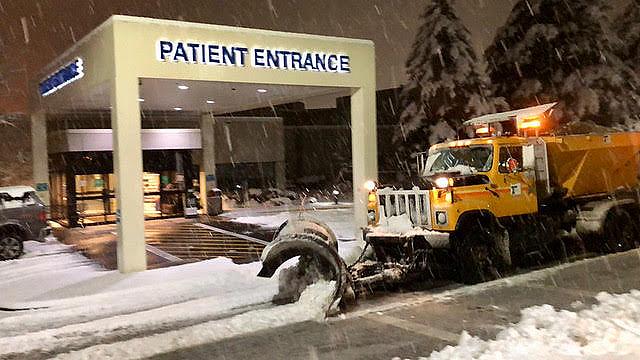Is the rural hospital system near you succeeding or failing? Check this database
There are many measures by which you can answer this question. The great investigative reporting team at GateHouse Media, led by Jonathan Riley and Michael Braga, have created a way for you to answer this question in the financial sense.
In one of the best investigative projects of 2019, Riley and Braga dug into the financials of the failed Oswego Community hospital in Kansas and found a stunning story. Kathleen McGrory detailed how they did it in another post, describing how they uncovered “dubious business practices,” “questionable billing,” and “fraud.”
You can quickly start the paper trail to find similar financial shenanigans near you because Gatehouse has done much of the homework for you. They have put together an easily searchable database that allows you to see quick visualizations of your hospital system’s most recent financial trends, based on cost reports from the Center for Medicare & Medicaid Services.
Here’s how you can do it.
First, go to the database: “Financial condition of rural hospitals”
Pick a state. I first chose Missouri.
Then pick a rural location within that state. There will be hospitals and health centers, of course, that you can’t find in this list, but it’s a great start. I first chose Osage Beach, which pulled up data on the Lake Regional Health System.
What you see in the first graph, showing gross revenues, is the appearance of marginal success. This is all the money coming into the health system – regardless of what the system is spending. Lake Regional’s gross revenues climbed from around $400 million in 2011 to around $500 million in 2015. But here’s the first warning sign. Growth started to stagnate and then plateau through 2017. Generally, health care costs rise year after year and so revenues should rise, too. That’s why your insurance premiums inch – or even leap – upward every year.
So you would expect when you scroll down to the next graph, showing net income, that you would see income also rise and then start to plateau. Remember, this is showing what the hospital was able to bring in after paying its costs. But, instead, the net income trend is even worse than gross revenues, peaking at just over $14 million in 2014 before falling all the way to $1.8 million in 2017. That could be the sign of a health system in freefall. Your job would be to do what the Gatehouse team did. Find current and former employees and talk with them. Find patients and talk with them. Look for lawsuits. Look for bankruptcy court filings. Ask for an interview with the CEO. There is a story there.
To get a sense of other hospitals in other parts of the country, I checked on Montana.
This time I chose Harlowton. Up popped Wheatland Memorial Hospital where the situation is even more dire. Revenues have been climbing — good sign — but net income is a disaster. The hospital has only seen positive net income in one year between 2011 and 2017. It lost $62,900 in 2011, then $717,800 in 2012, and so on. In 2015, its losses were nearly $1 million, making for an 18% profit loss, followed by a 9.5% loss the following year.
Why does it matter if a hospital loses a bunch of money? Wheatland’s tagline is “Sustainable Quality Care,” and quality is certainly not sustainable with those kinds of ongoing losses, since maintaining quality requires revenue for maintenance, salary increases, recruiting high performing staff, keeping current with technology change, and the like.
In 2012, the hospital created the Wheatland Memorial Healthcare Foundation. While the urban hospital in my neighborhood recently raised millions of dollars for a new wing, the wish-list items for this small rural hospital are modest: $3,000 for a new furnace, $2,000 for new blinds, $1,500 for chairs. This suggests that even basic needs aren’t being met. It also suggests that the hospital knows the community it serves doesn’t have deep pockets.
These are literally the only two hospitals I chose to examine out of hundreds in the GateHouse database. You will certainly be able to find your own good stories with some hunting around. Good luck — and let me know what you find.


